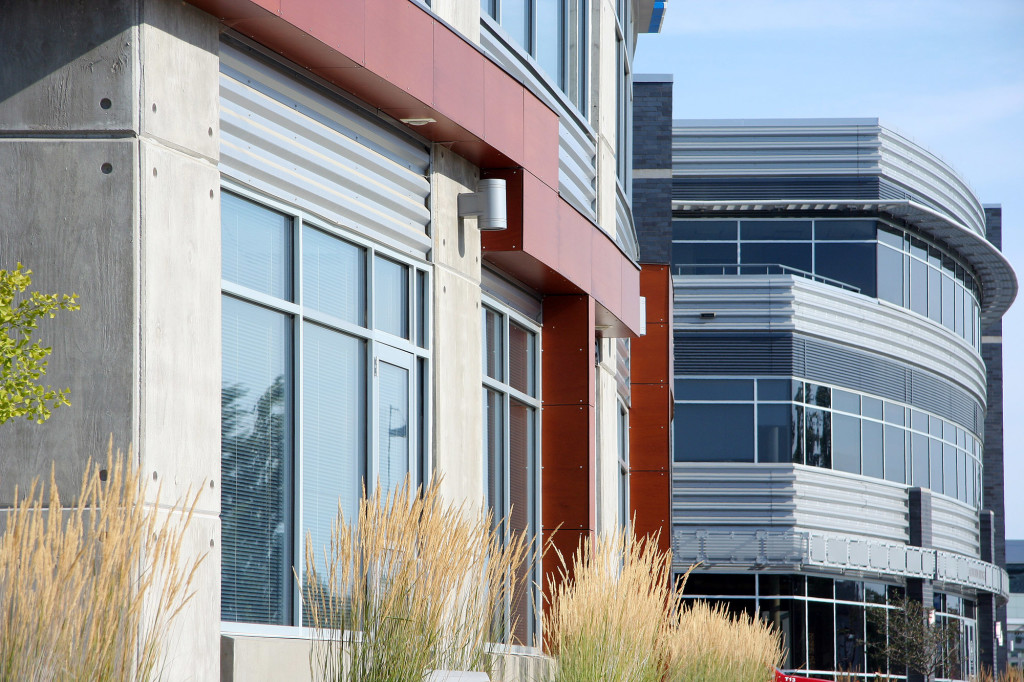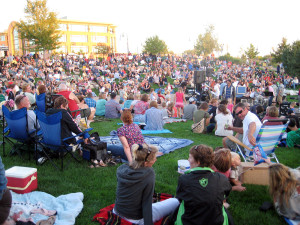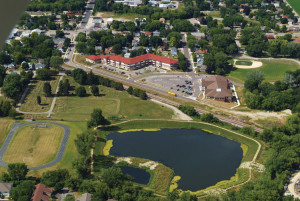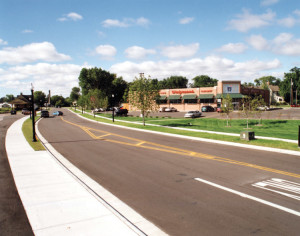What Does Brownfield Redevelopment Cost? Right Question Is ‘What Does It Pay?’
 If you have a blighted area in your community, you can view it as a liability, or you can see it as an opportunity. That brownfield is probably shouting “ugly, ugly, ugly!” to all who drive by, but it might also be whispering “location, location, location.”
If you have a blighted area in your community, you can view it as a liability, or you can see it as an opportunity. That brownfield is probably shouting “ugly, ugly, ugly!” to all who drive by, but it might also be whispering “location, location, location.”
Communities that can see beyond the scars and understand the unique history and surroundings of a brownfield can seize the opportunity. By harnessing and focusing the ambitions of entrepreneurs and officials, a smudge on the face of a community can become a place where the tide turns and energy grows. And with federal brownfields grants readily available to light the fire, many communities already have turned their dreams into blazing financial returns and other less tangible benefits.
According to statements from the U.S. Environmental Protection Agency, EPA brownfield grants:
- Have triggered the production of 90,363 jobs nationwide.
- Have funded projects that have inspired $17.79 in investments for every EPA grant dollar expended.
- Can increase residential property values 5.1% to 12.8% near brownfield sites when cleanup is completed.
In Wisconsin, which is recognized as a leader in brownfield redevelopment, a new job is created for every $10,000 to $13,000 spent on remediation, according to “Benefits of Public Investment in Brownfield Cleanup and Redevelopment,” a research paper by Nancy Frank, PhD, AICP, of the University of Wisconsin-Milwaukee. A dollar of public investment in a redevelopment site yields a $5 to $20 increase in property value, according to this paper, while the surrounding neighborhood’s property values typically increase 5% to 15%.
According to “Investing In Wisconsin: Reducing Risk, Maximizing Return,” a 2015 Brownfield Study Group report, the Wisconsin Department of Natural Resources has overseen or conducted some type of environmental cleanup-related activity in a staggering 1,774 municipalities.
Clearly brownfields are virtually everywhere, including in Wisconsin, where Ayres has made a name for itself in this niche, as well as in Wyoming, Colorado, and Arizona, where we are currently helping communities plan redevelopments.
Here are a few success stories from communities that already have dealt with large and small brownfields head-on and have reaped the benefits.
Novation Technology Campus: Novation Technology Campus, pictured above, is a 70-acre technology park redevelopment on the site of a former landfill just outside Madison, Wisconsin. The master plan shows office, technology, and research space to eventually accommodate over 3,000 employees. Exact Sciences, one of the Novation Campus tenants, is undergoing a major expansion after the FDA approved the company’s non-invasive screen for colorectal cancer and is expected to grow to 500 employees at its Novation Center facilities by the end of this year, according to this Wisconsin State Journal article. Ayres Associates provided successful grant writing services to move the campus project forward, as well as Phase 1 and 2 environmental site assessments, grant administration, and remediation activities, including Comprehensive Environmental Response, Compensation, and Liability Act (CERCLA) level management plans – Quality Assurance Project Plan (QAPP), Sampling and Analysis Plan (SAP), and Health and Safety Plan (HSP).
 Phoenix Park: This is a perfect example of how cleaning up a brownfield can create ripple effects throughout a community. This linear park along the banks of the Chippewa and Eau Claire Rivers in Eau Claire, Wisconsin, involved a trailhead and trail connections for Eau Claire’s growing bike trail network, a farmers market pavilion, and a labyrinth. More than the sum of its parts, Phoenix Park has turned residents back toward the rivers after years of neglect, attracting thousands of visitors to weekly summer music events, the market, and many special events. It has also attracted offices with hundreds of high-tech and office jobs across the street, several upscale apartment complexes nearby, as well as new and renovated commercial spaces in a several-block radius. This WDNR video will give you a taste. Ayres provided master planning; demolition plans; landscape architecture; and park, street, stormwater, and public utilities design.
Phoenix Park: This is a perfect example of how cleaning up a brownfield can create ripple effects throughout a community. This linear park along the banks of the Chippewa and Eau Claire Rivers in Eau Claire, Wisconsin, involved a trailhead and trail connections for Eau Claire’s growing bike trail network, a farmers market pavilion, and a labyrinth. More than the sum of its parts, Phoenix Park has turned residents back toward the rivers after years of neglect, attracting thousands of visitors to weekly summer music events, the market, and many special events. It has also attracted offices with hundreds of high-tech and office jobs across the street, several upscale apartment complexes nearby, as well as new and renovated commercial spaces in a several-block radius. This WDNR video will give you a taste. Ayres provided master planning; demolition plans; landscape architecture; and park, street, stormwater, and public utilities design.
 Former Stokely Canning Plant: Ayres helped the Village of Waunakee, Wisconsin, to clean up the closed Stokely canning site to make way for a community center, a senior center with 77 affordable housing units, and a 6-acre green space with a detention basin. Blight, safety concerns, and contamination of soil and ground and surface water were replaced with new jobs, a bike/pedestrian trail, community gardens, a community center that promotes fitness, and badly needed flood protection.
Former Stokely Canning Plant: Ayres helped the Village of Waunakee, Wisconsin, to clean up the closed Stokely canning site to make way for a community center, a senior center with 77 affordable housing units, and a 6-acre green space with a detention basin. Blight, safety concerns, and contamination of soil and ground and surface water were replaced with new jobs, a bike/pedestrian trail, community gardens, a community center that promotes fitness, and badly needed flood protection.
National Brewery Museum: Ayres provided grant writing assistance and environmental site assessments to help the Village of Potosi, Wisconsin, and the Potosi Brewery Foundation lay the groundwork for a project that turned a former brewery building into the home of the National Brewery Museum. The facility includes a microbrewery, restaurant, and gift shop.
 City of Marinette, Wisconsin: The City needed to remove and/or renovate blighted buildings and remediate soil on six parcels in the center of town. Where there once were bulk fuel facilities, gas stations, junk yards, and a leather processing facility, Ayres helped the City to attract a Walgreens pharmacy that brought in 29 new jobs, relocated and restored an old railroad depot to provide a focal point and another location for a business enterprise, and extended a street, allowing other blighted properties to upgrade their businesses and still others to acquire land and build along the improved street.
City of Marinette, Wisconsin: The City needed to remove and/or renovate blighted buildings and remediate soil on six parcels in the center of town. Where there once were bulk fuel facilities, gas stations, junk yards, and a leather processing facility, Ayres helped the City to attract a Walgreens pharmacy that brought in 29 new jobs, relocated and restored an old railroad depot to provide a focal point and another location for a business enterprise, and extended a street, allowing other blighted properties to upgrade their businesses and still others to acquire land and build along the improved street.
If you would like further information about how Ayres Associates can help your community turn over a new leaf on a troubled property, contact Scott Wilson, vice president of our environmental division.
Comments
This just in. Two Cheyenne, Wyoming, businessmen plan to buy one of the vacant buildings within the West Edge brownfield redevelopment project that Ayres is working on right now in Cheyenne. This is more proof of the payoff brownfields can bring, including in terms of private investment. The plan is to turn the building into a multi-use facility. Check out this story from KGWN to learn more about the project and to see a DHM Design rendering of how the refurbished building might look. Ayres is working with DHM on the West Edge brownfield redevelopment project.
Private investment is beginning to paint the picture of a brighter future for the City of Cheyenne’s West Edge area, which is the subject of a major brownfield redevelopment effort that will improve blighted properties as well as the area’s stormwater drainage. Read more about the project and Ayres’ role in this Wyoming News artice.

Post a comment: